Remsen House, 27th Avenue and 12th Street, Astoria, destroyed February 2005. The house was built in 1835.
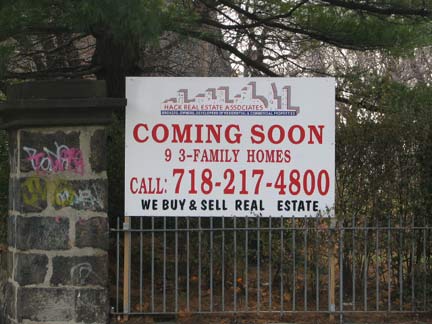
DEVELOPERS can be a hateful, despicable bunch. Quite a statement coming from a website that evades controversy like Barry Bonds evading a steroid test. But it’s the truth.
I am completely ignorant regarding real estate, the price of land and housing, the taxes. I have been a renter my entire adult life and will likely remain so, unless that weekly Megamillions ticket comes in.
Developers are tearing down perfectly good one-family homes built in an era, the 1860s and prior, when craft and style were still treasured, and replacing them with blond-bricked junk.
Flushing’s gone. It died in the 50s and 60s, when its Victorian-era housing stock was razed in favor of block after block of multi-unit apartment housing.
And now, Astoria Village is going.
Astoria Village’s pedigree dates to the mid-1600s, when William Hallett received a grant for the area surrounding what is now Hallett’s Cove by Peter Stuyvesant. However, the oldest structures in the region date to the 1820s. Fur merchant Stephen Ailing Halsey incorporated the village in 1839.
Astoria was named for a man who apparently never set foot in it. A bitter battle for naming the village was finally named by supporters and friends of John Jacob Astor (1763-1848). Astor, entrepreneur and real estate tycoon, had become the wealthiest man in America by 1840 with a net worth of over $40 million. (As it turns out, Astor did live in “Astoria”–his summer home, built on what is now East 87th Street near York Avenue–from which he could see the new Long Island Village named for him.)
GOOGLE ASTORIA MAP (best viewed from Firefox)
Wealthy businessmen built homes on what are now 12th and 14th Street, some cozy boxes, others large, ornate mansions; sadly, some of the few that remain have been altered nearly beyond recognizability.
Hallett’s Cove today, the region in Astoria just south of Astoria Park and west of 21st Street, is today a mixture of breathtaking houses, ancient churches and graveyards, as well as forbidding, utilitatian housing projects and industrial buildings. The area near Astoria Park, as well as Ditmars to the north, feature views of the Hell Gate (1910) and Triborough (1936) bridges. It’s typical of the resolute nondevelopment of New York City’s waterfront that the closer to the water you get, the more boring the housing gets. Much of the waterfront area is also occupied by a massive Con Edison plant.
Virtually nothing remains of William Hallett’s original settlement along the cove that today bears his name (flags along the neighborhood’s streetlamps call this area Two Coves–Hallett’s Cove proper, at Vernon Boulevard and Main Avenue where they meet the East River, and Pot Cove, at the foot of Astoria Park South and Shore Boulevard). It was only after Stephen Halsey incorporated a village here in 1839 that streets began to radiate east and south from the area. Most of them, but not all, were originally named for local landowners. Even if you didn’t notice the old-style Victorian buildings found in the area, its age can be detected by the narrowness of some of its streets as well as the irregularity of its street pattern; 12th Street changes directions three times, and 26th Road slants askew its neighbors. Astoria Village is centered at 21st Street, Astoria Boulevard and Newtown Road. West of here, the streets seem more timeless, with old churches, narrow sidewalks and hidden cemeteries, while east of here, things seem more conventionally Queens-like. Unfortunately, Astoria Village’s timeless quality is swiftly disappearing as developers buy up the old mansions and raze them, building multi-family bland brick boxes. Visit Astoria Village while you still can. We’ll show some Village classics here, along with some unusual scenes elsewhere in Astoria.
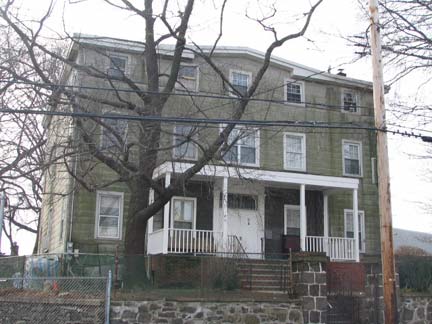
If what was originally the Astoria Institute for the Education of Young Ladies, a finishing school built in 1828, is still there on 27th Avenue east of 12th Street, it will not be there long. The current parsonage for St. George Episcopal Church, a block away, it has been doomed by the church itself, which has been in financial trouble and needs to make money on the property.
According to a New York Times article, its marble fireplace and other details will be removed and placed elsewhere. Senior citizens housing will replace this nearly 180-year-old building.
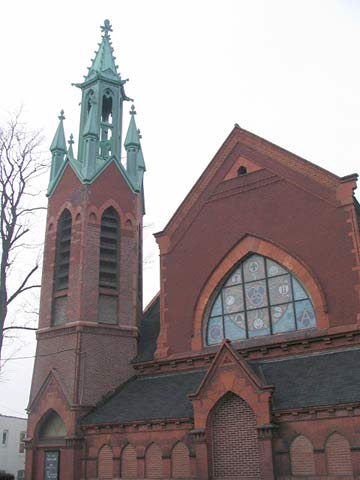
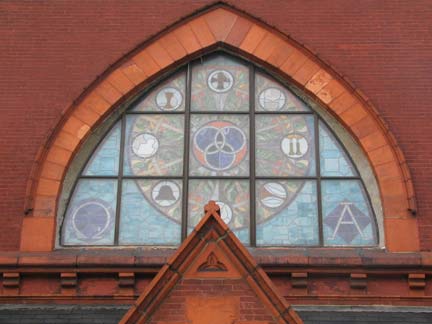
The First (Dutch) Reformed Church of Astoria at 27-26 12th Street is not, at present, in developers’ crosshairs, but eventually, it seems, every building will be, if zoning is not changed and provisions are made. The building dates to 1888 but the steeple dates to sometime in the 1920s. Note the symbol in the stained glass window…nothing to do withBallantine Beer, we presume. The churchyard contains the remains of Stephen Halsey, supposedly.
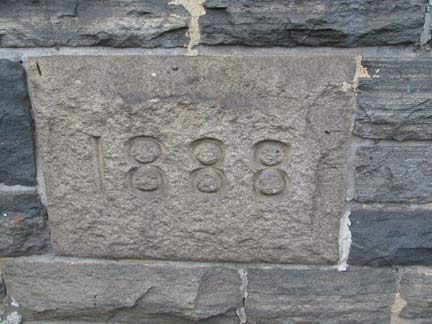
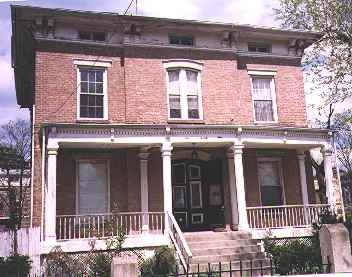
Chaimberlain Taylor House (ca 1840s)
9-29 27th Avenue. Owned by two successive Astoria doctors inclusing a Dr. DeWayt. Note the little “eyebrow” windows at the top.
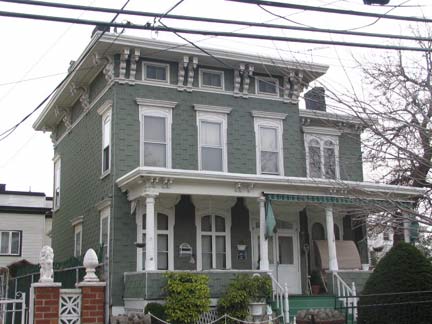
Surviving 12th Street mansion
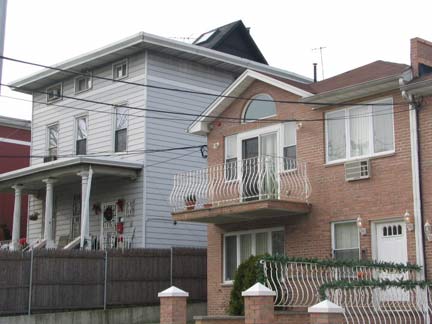
Surviving 12th Street mansion, adjoining 21st century junk
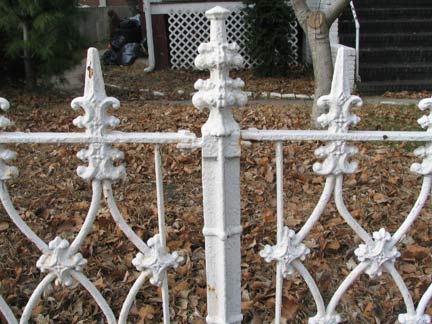
Ornate fence ironwork, 12th Street

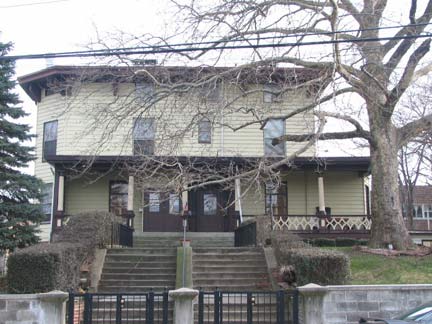
A pair of 14th Street survivors
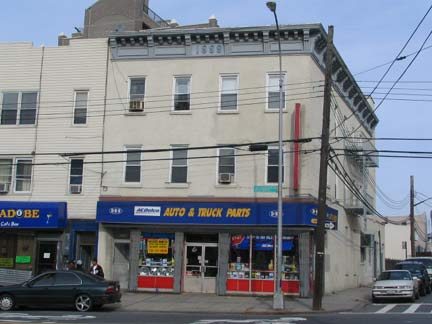
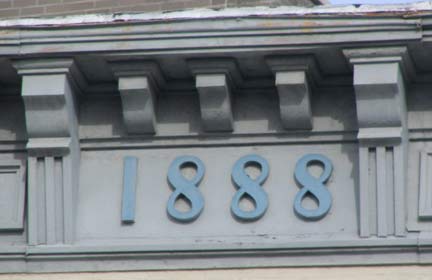
Astoria Boulevard and 23rd Street
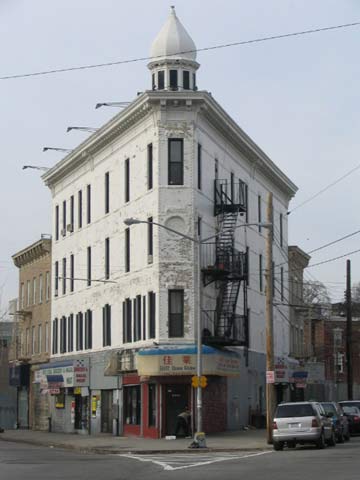
Triangle plots always make for dramatic building possibilities; Astoria doesn’t disappoint at the confluence of Astoria Blvd., Newtown Road and 21st Street. This cupola-topped building is surprisingly little changed from its 1890s heyday. The circle in front formerly held a clock.

Ford tough. This antique car stands in an empty lot at 12th Street and 29th Avenue at what used to be the Hallett burial ground.
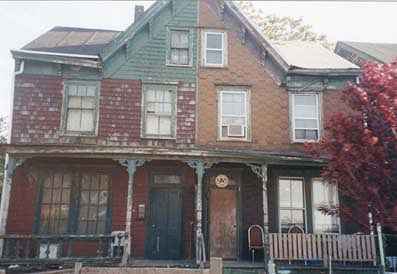
“Stick-style” Victorian era house, Astoria Village, 26th Ave. between 3rd and 4th Streets. Photo: Bob Singleton

Crescent Street Tudor, once a hospital
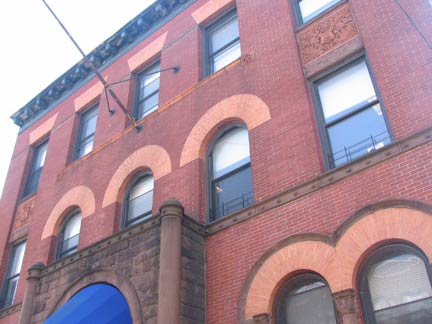
30th Ave police precinct
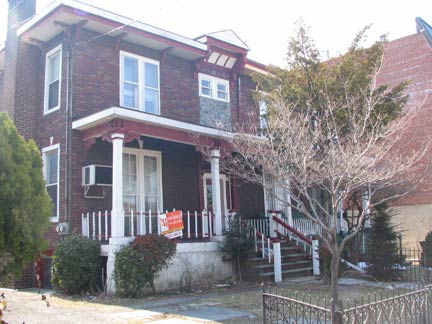
30th Avenue one-family. Its for-sale sign would seem to indicate it will soon succumb.
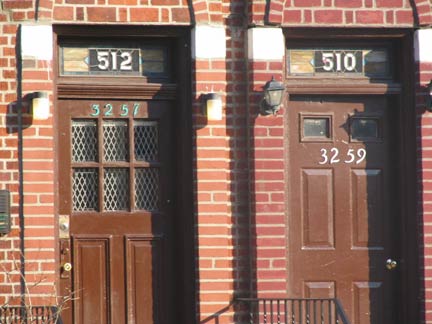
33rd Street south of Broadway. The stained glass house numbers are a relic of Astoria’s old street system; before the Queens Topographic Bureau began re-numbering Queens streets in 1915, 33rd street was called 4th Avenue.
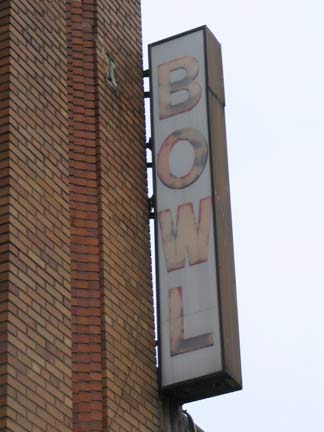
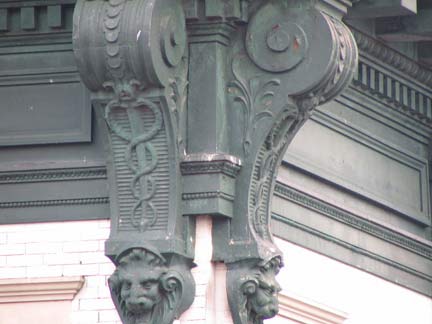
New York City’s bowling alleys are becoming fewer and fewer but there’s an illuminated sign on Broadway near Crescent. Caducei on a building at 31st and Broadway probably signify a former doctor’s office.
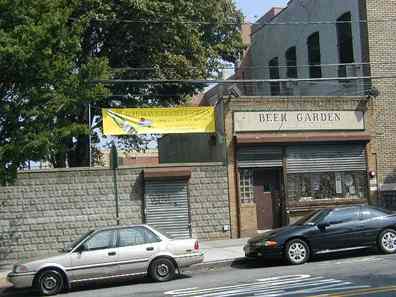
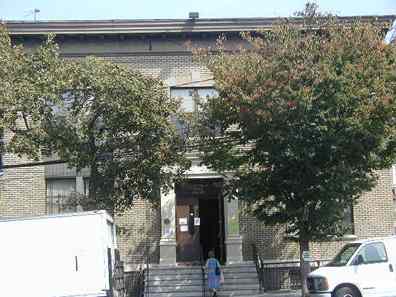
For many Astoria denizens, lazy summer evenings mean downing pitcher after pitcher of pilsner, seated on wooden picnic tables in the concrete beer garden of Bohemian Hall to an oompah soundtrack. The 24th Avenue institution was opened by the Bohemian Citizens’ Benevolent Society (right) in 1910 and its garden by 1919, when most of Astoria was still meadow and farmland.
The menu has to be carefully scrutinized, as the large print is in Czech and the small print in English. The recent success of the Bohemian has sparked a revival of the beer garden as a NYC summer mecca, with many springing up around town in recent years. More on the Bohemian in the FNY Ancient Bars page.
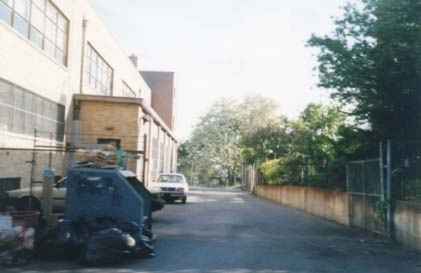
It could merely be a figment of my imagination. A map in the 2000 edition of the AIA Guide to Architecture, which shows quite a few outdated routes, show a remnant called Blackwells Lane ( named for the Blackwell family, wich held so much land in the area in the 1700s) on 27th Avenue west of 12th Street, so I took a ride over there to check out my hunch.
I found a driveway in the place where Blackwells Lane should be. Nothing unusual, right? But if you walk down the driveway and peek in the foliage behind it…you find something interesting. A short lane trails off into the foliage, corresponding to the place it appears to be on the map.
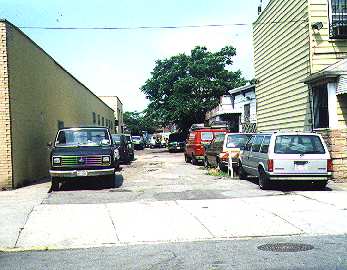
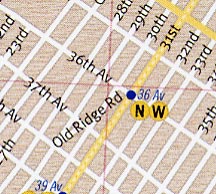
Meanwhile, there’s still a piece of Old Ridge Road at 38th Avenue between 29th and 30th Streets; the ancient road between Middletown and Dutch Kills has actually found its way onto a new map of New York City by Opus Publishing.
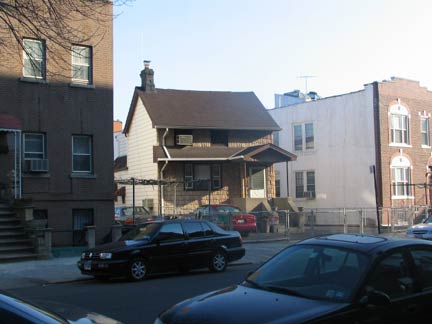
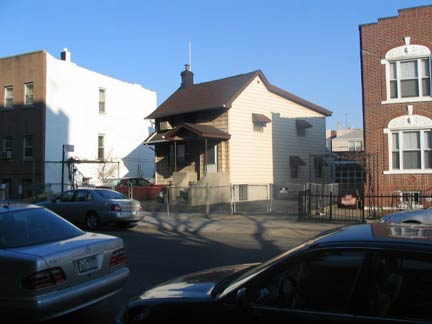
Another Ridge Road relic can be seen in this strange house on 33rd Street south of Broadway. It seems to turn away from its neighbors as if to hide. Actually it signifies that Ridge Road once ran in front of it and was built along the road. In many parts of Queens, we can see traces of ancient roads from the orientation of the buildings.
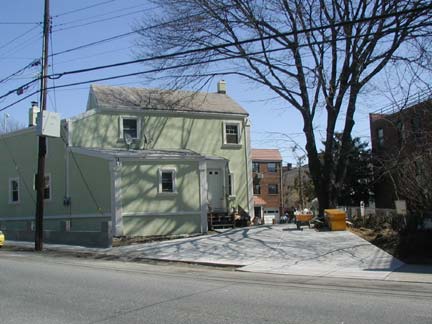
Ridge Road was laid out as early as 1640 and ran from old Middletown, centered in the Newtown Road and 46th Street area, to Dutch Kills. Newtown Road (left) is of similar age, and during the Revolution, British troops marched along its route. Unlike Ridge Road, Newtown Road has thrived over the centuries as a short cut through the predominant grid street pattern.
Middletown was about halfway between the small settlement that became Astoria and Dutch Kills, along Newtown Creek.
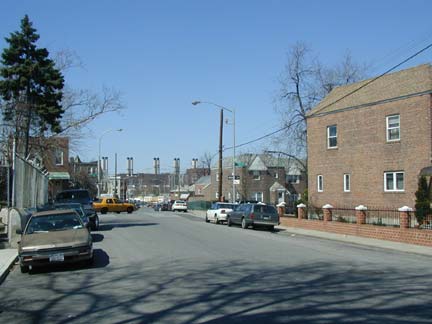
20th Road runs from 31st to 46th Streets just south of 20th Avenue. It has been there since the 1700s and winds around, oblivious to the prevailing street grid. On some older maps, it’s called Bowery Bay Road, but that would seem to confuse it with two other old Queens roads, one running from Sunnyside to the northwestern end of Jackson Heights (Celtic Avenue, Hobart Street and Hazen Street are remnants) and a right-of-way in eastern Jackson Heights partially occupied by Jackson Mill Road today.
In previous centuries, streets were rarely marked well, and all three may well have been known as Bowery Bay Road in honor of the nearby indentation of the East River south of Rikers Island
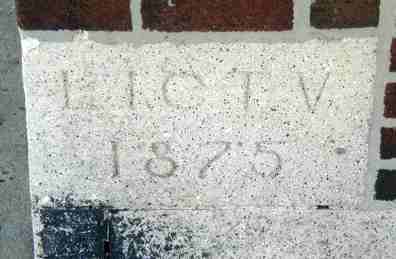

An odd cornerstone at Broadway and 45th Street bears the inscription L.I.C.T.V. 1875. What could it mean? Television in 1875? A clue can be found in the side entrance, where you will find the chiseled word “Gymnasium.” Acording to Astoria Historical Society president Bob Singleton, this was the HQ of the Long Island City Turn Verein, originally a gymnastics/athletics group, then a social club. The building was known as Turn Hall.
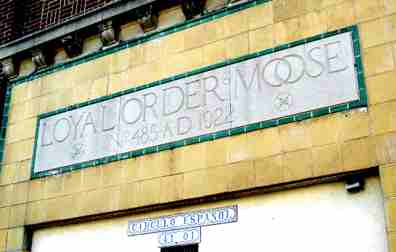
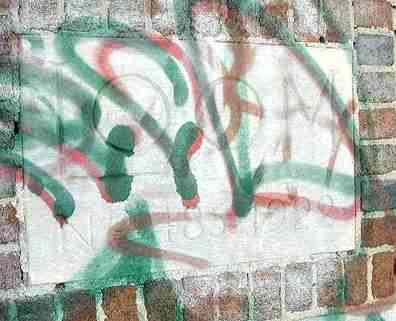
Fruit of the L.O.O.M. When I first saw this on Broadway I thought it must be a joke, but it would take quite awhile to chisel this, with the nifty interlocking O’s, if it was. But it’s no joke. There are Women of the Moose, too. You have your Elks and Lions, why not Moose? Do they wear fezzes?
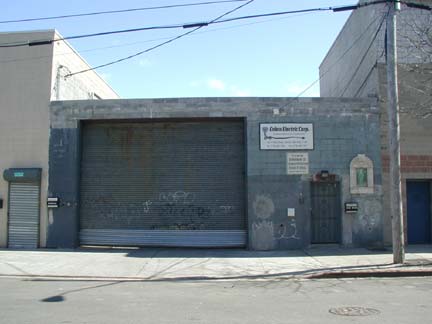
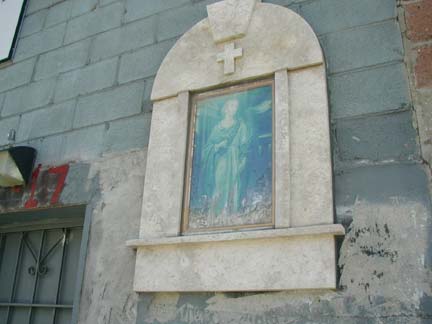
There’s a warehouse on 42nd Street near 19th Avenue, a block from the old Steinway Mansion, with a curious shrine to St. Lucy, a 4th-Century martyr killed by a Roman Empire persecution. Lucy is usually depicted holding a chalice containing two eyes. Legend has it that the Roman emperor, Diocletian, put her eyes out, but her sight was miraculously restored: she is patron saint for those with eye trouble. Her name comes from the Latin term for “light.” What she’s doing on 42nd Street, only she can tell you.
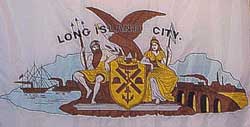
For a much more comprehensive overview of Astoria and western Queens, visit the Greater Astoria Historical Society.
RELATED…
Our first Astoria Village page
Long Island City (second page)
SOURCES
Long Island City, Grearter Astoria Historical Society, Arcadia 2004
BUY this book at Amazon.COM
Photographed mostly November 2004; written June 4, 2005.

